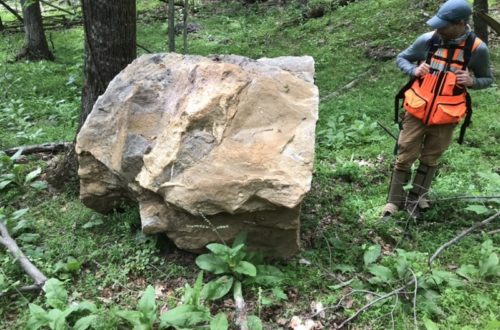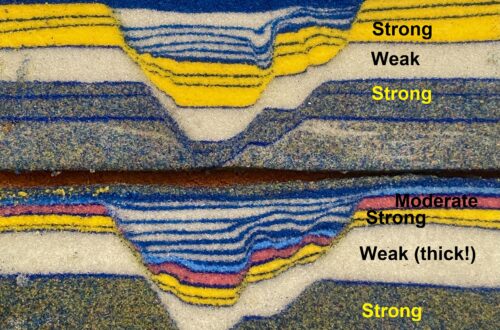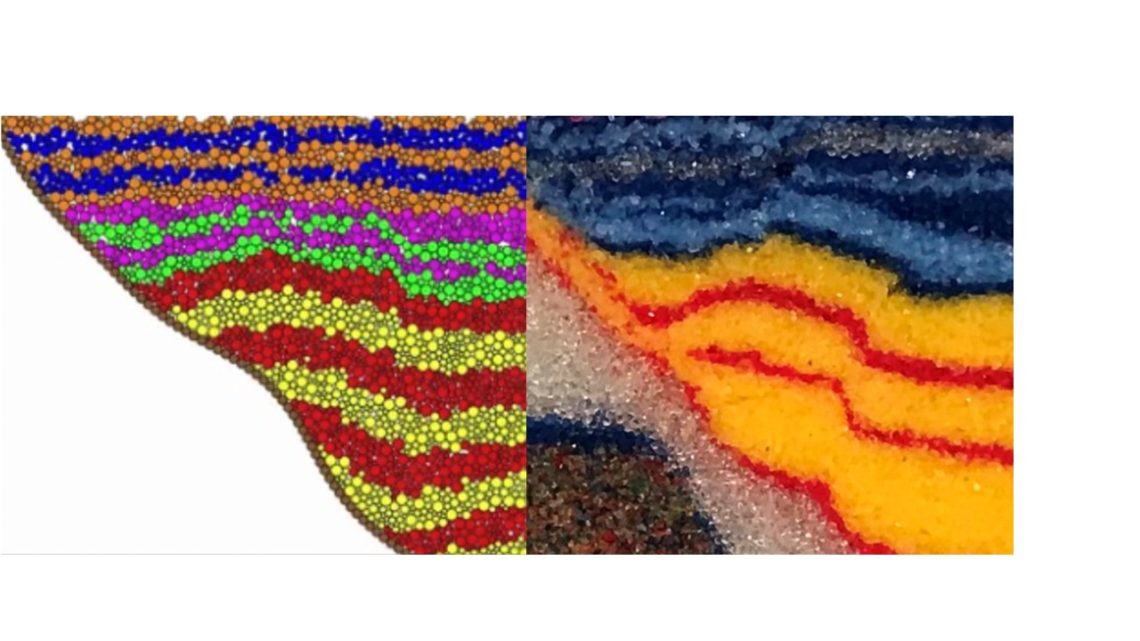
Real sandbox model meets “numerical sandbox” model…an interesting comparison of dry granular media and discrete element simulation
by Philip S. Prince
Back in February, I saw several references to the CDEM discrete element modeling tool on Twitter. One of the example simulations reminded me of a “real” sandbox model I made a couple of years ago while experimenting with different material properties. The two results are shown below, with the CDEM example on the left and the real sand model on the right.
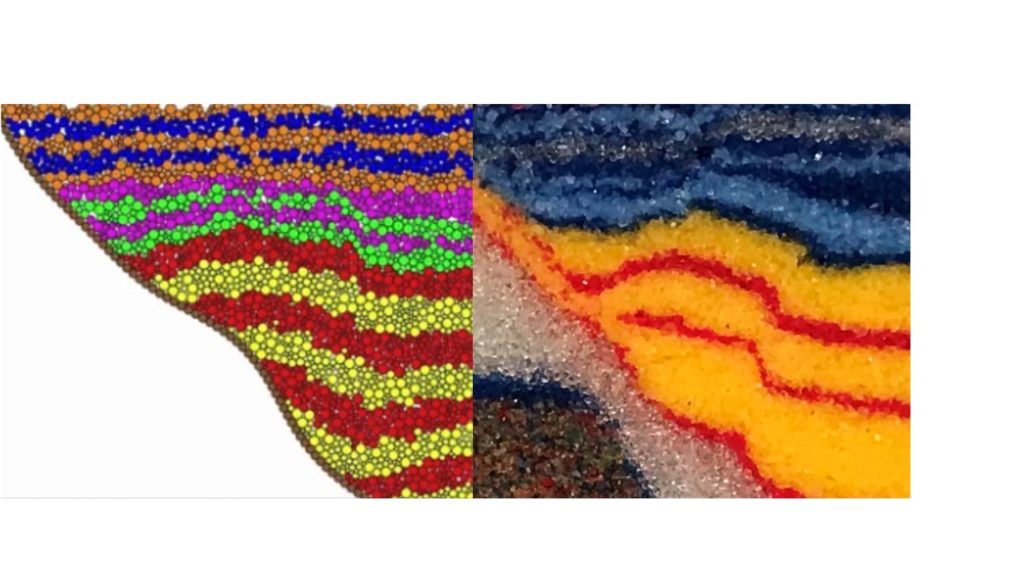
The CDEM example above is the first animation that appears under the Examples tab on the CDEM site. The simulation demonstrates folding above an irregular normal fault, which flattens, then steepens, then begins to flatten again moving downward. The first flattening section causes the formation of the upright anticline, which is an example of extensional fault-bend folding, or rollover. The real-life sand model develops its anticline through the same process, which results from mechanically different layers of granular media within the model.
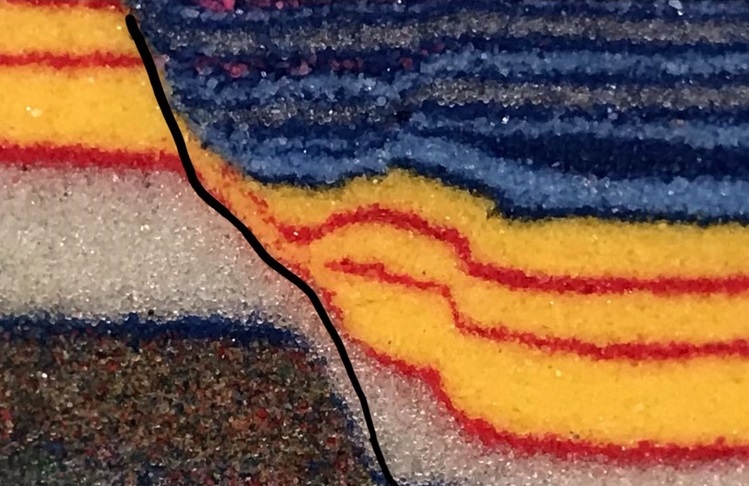
The image above shows a zoomed-out view of the sand model. The upper yellow layers (dolomite sand) are very strong and brittle, as are the deeper gray/multicolor layers (also dolomite sand). The white microbeads in the middle of the model stratigraphy are very weak, and a produce a shallower fault angle than the layers above and below. The resulting fault shape is thus steep-shallower-steep moving downward, which replicates the CDEM model setup. As layers in the hanging wall move over this fault shape, the closed anticline results. The last steepening of the fault also produces the unusual fault to the right of the anticline, which has normal-sense offset deep in the yellow layers and reverse-sense offset at the top of the yellow layers.
Extensional anticlines reproducibly result from this model setup as long as sufficient contrast exists between different mechanical zones. The images below show two anticlines created with the same microbeads, but faintly different upper and lower units.
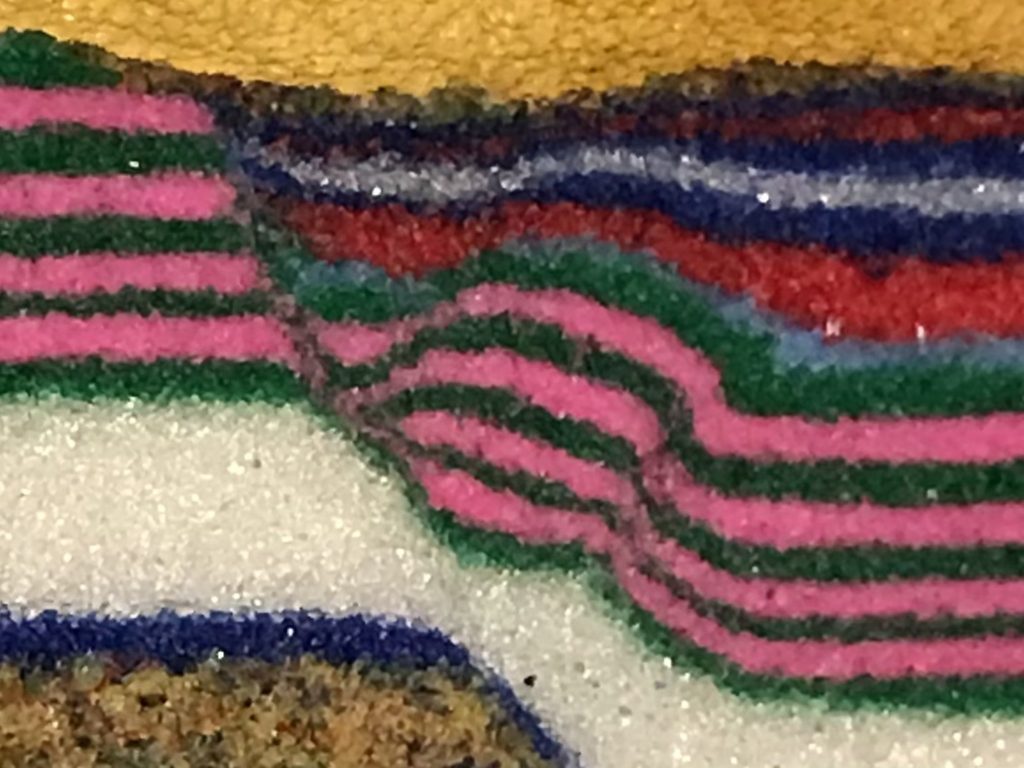
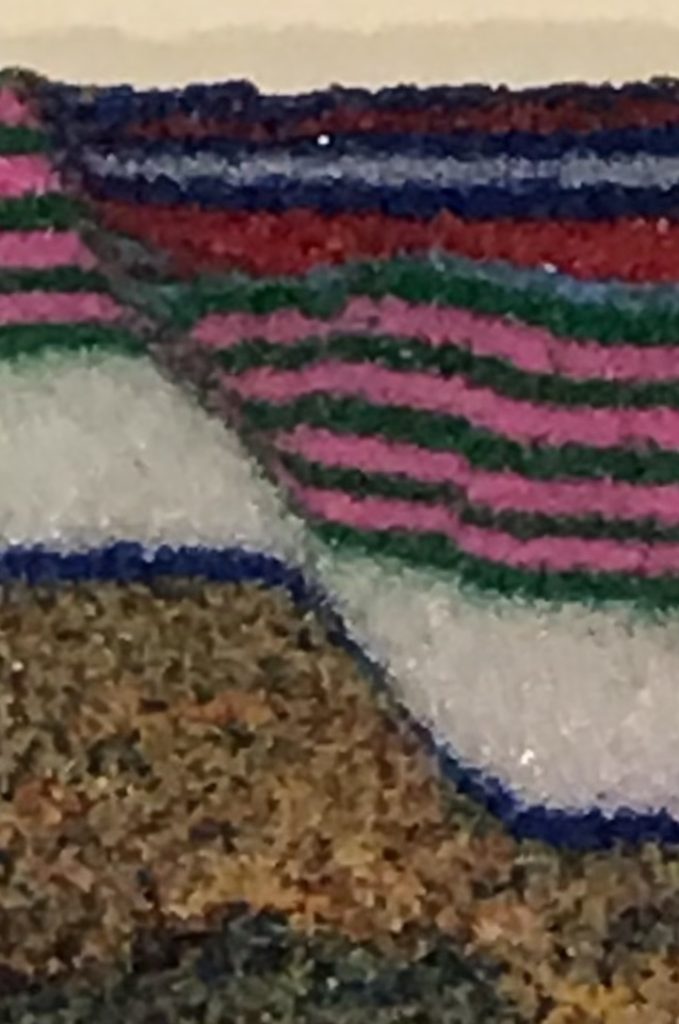
Anticlines in these pink-and-green models tend to show small faults or obvious stretching and thinning of layers along the crest of the anticline. This damage results from collapse of the hanging wall onto the flatter section of the main normal fault (sketched and animated in this link). The images below show the position of these faults, which contribute to the ragged appearance of the anticlinal crests in the pink-and green models. These models also developed the normal-to-reverse faults to the right of the anticline, as indicated below. The glare from the microbeads and reflections off of the dolomite sand cleavage surfaces make these models difficult to clearly photograph, but the overall idea is apparent.
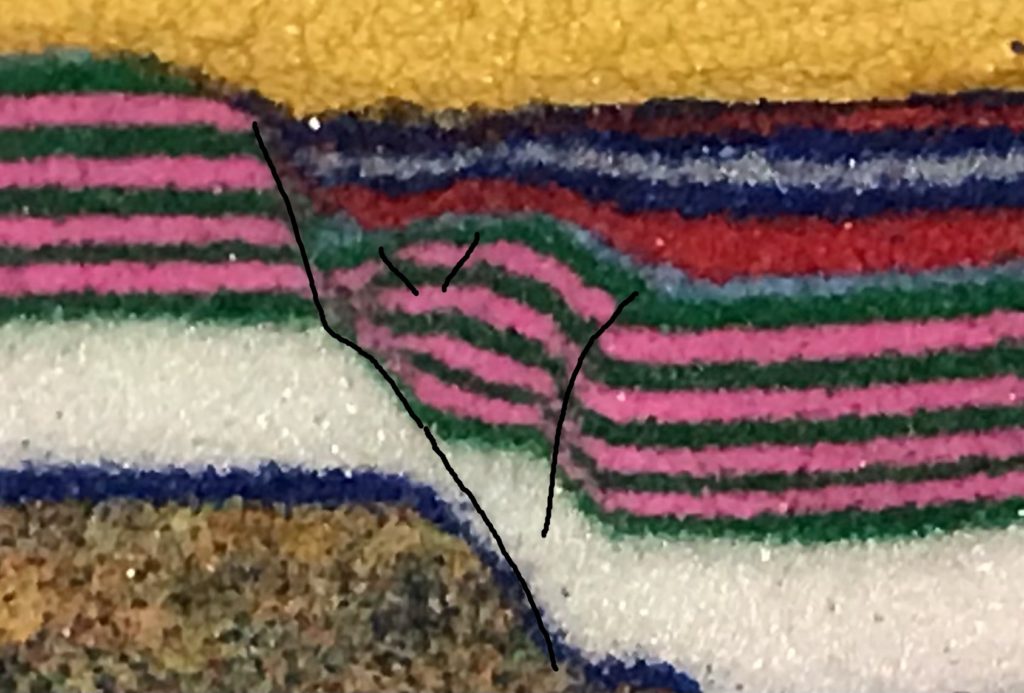
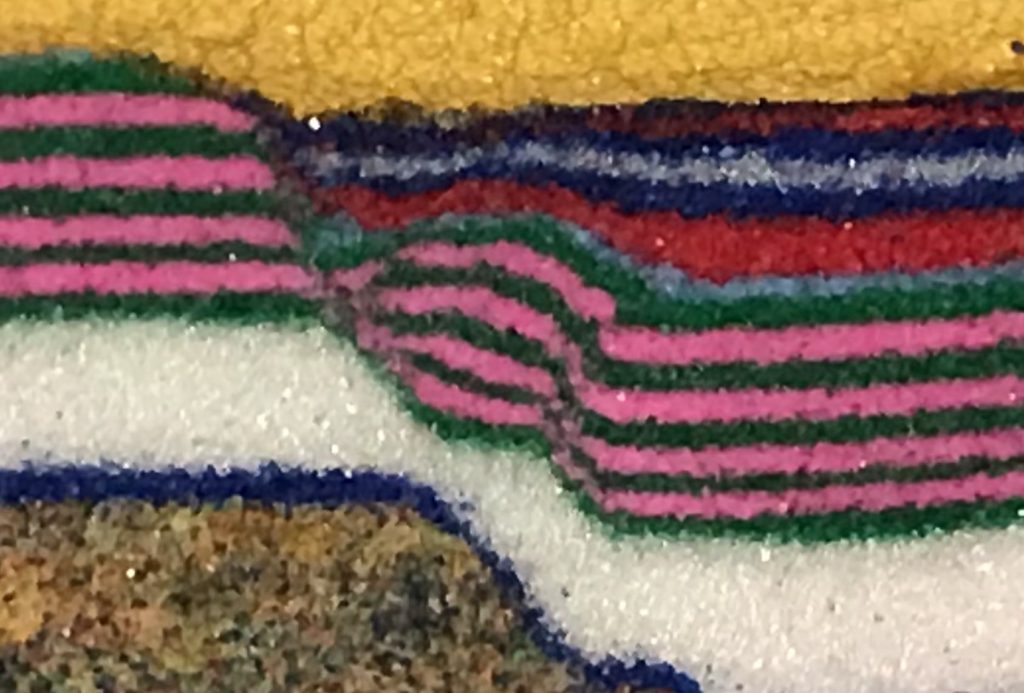
The little faults on the anticline crest are also present in the yellow-and-red model, but are less distinct. When sketched in on the image below, their position is apparent.
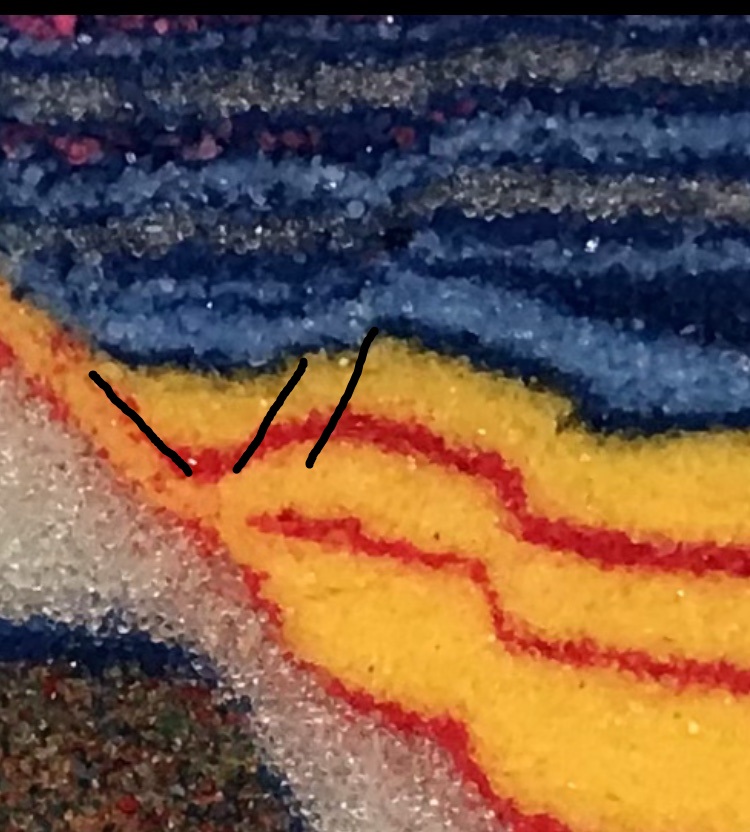
A takeaway message from these real-life sandbox models is that the layers on the anticline crests are not intact and undeformed. Because the anticlines develop from collapse and stretching of the upper layers, deformation and damage affects the layers even though it may not be obvious. Watching the CDEM animation in fast-forward by moving the scrubber bar on the animation video makes this crestal deformation easy to see. The CDEM model also develops upward-steepening normal faults which rotate into reverse-sense motion as seen in the real-life sand models. I have pointed these out in the screen shot below, but the simulation itself is definitely worth a look.
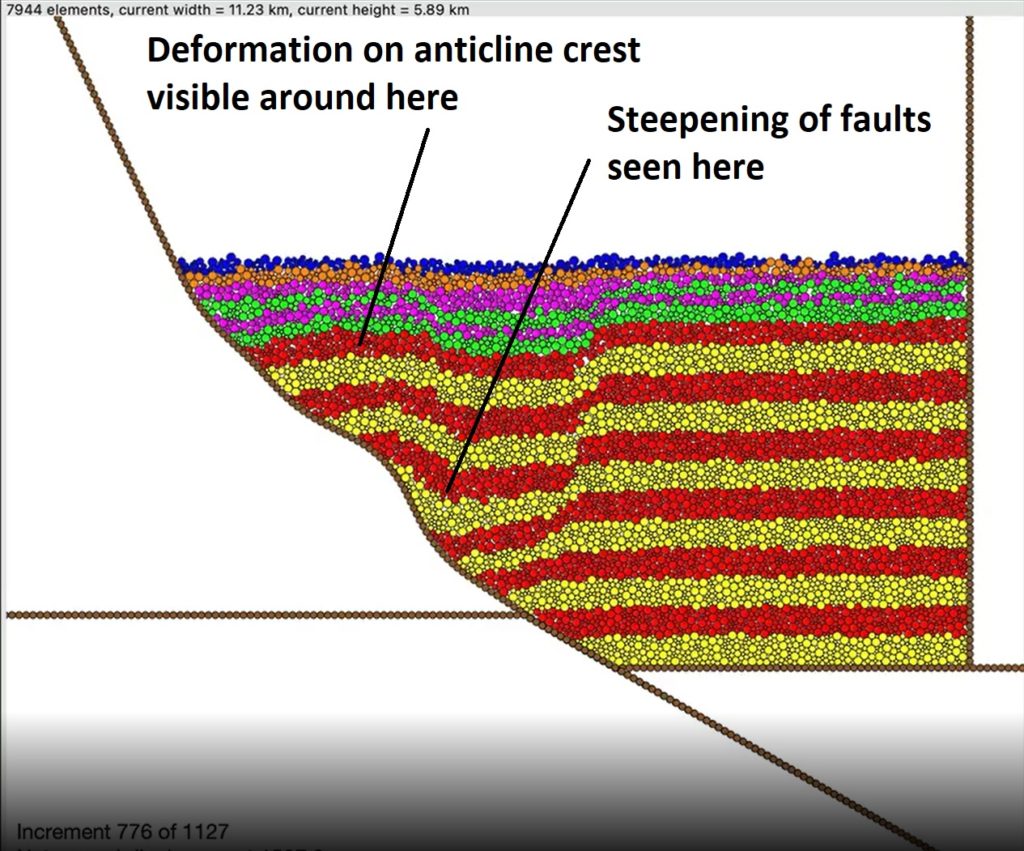
The CDEM animations are mesmerizing to watch, and they provide a great way to visualize changes in the real-life sand models, which I have never been able to produce against a clear sidewall (I make them from a wide sand cake on a table top with a movable base plate). Actually watching areas of focused particle movement in the CDEM animation helps connect initial and final geometries and brings attention to damaged and strained areas, like the anticline crest, that might not receive much notice in the final model geometry. I probably need to download CDEM and play with it myself, but it might significantly impact productivity on other projects!


